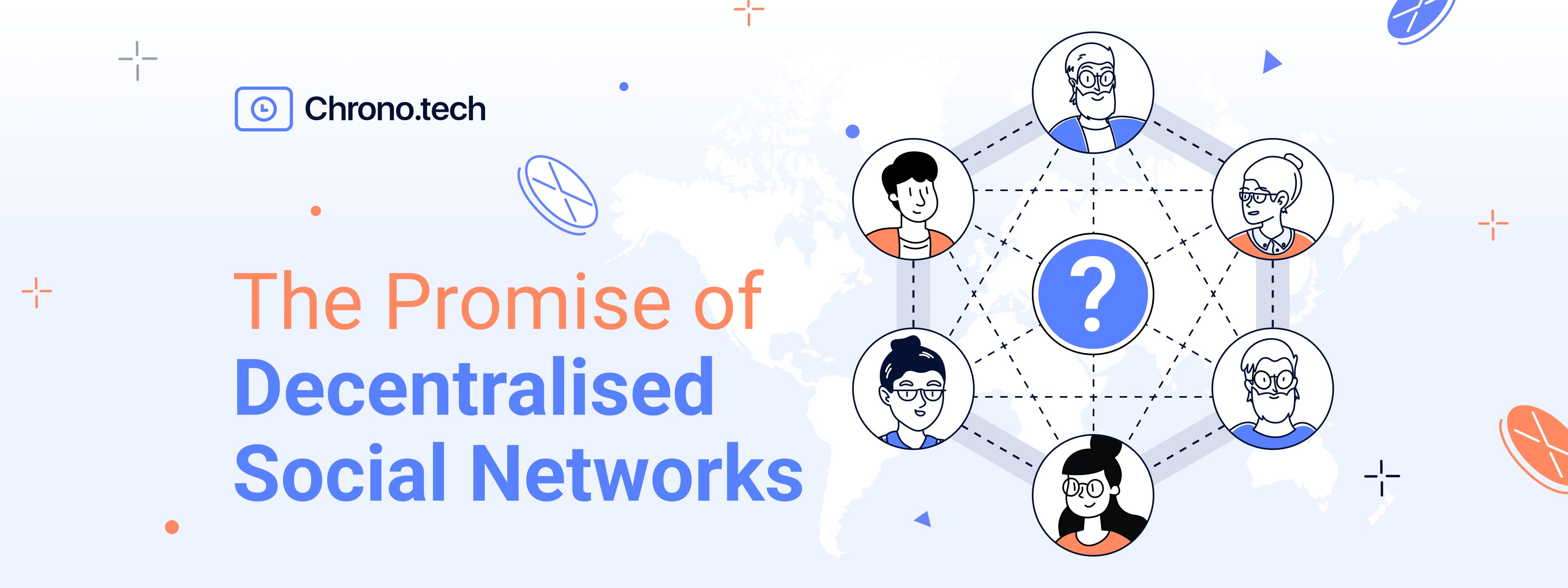Social media is one of Web2’s killer apps. There are almost 5 billion global social media users, and the number is forecast to rise to over 6 billion by 2027. Facebook alone has 3 billion monthly active users, and its parent company Meta is one of the largest corporations in the world.
But for all that – in fact, precisely because of that – social media has some big problems. These platforms are run by vast, powerful, centralised companies, whose business model relies on making the apps as ‘sticky’ as possible in the interests of harvesting and exploiting as much user data as they can. Just some of the issues this brings include:
- Censorship of posts, and even unilateral banning of accounts, for real or perceived infractions of rules designed in the interests of the company, not the user. Bans can be difficult or impossible to appeal, even in the case of simple mistakes.
- ‘Shadow banning’, where a user is not formally banned but the content they post is downgraded in importance or cannot be viewed by other users.
- Aggressive advertising, assisted by detailed data about users’ interests and needs.
- Misinformation or ‘fake news’ may be propagated, often intentionally and maliciously, by organised third parties.
- Loss of privacy, where user information is accessed, leaked or sold without their consent.
- Manipulation of user decisions, again via targeted advertising and/or misinformation. The Cambridge Analytica scandal and reports of election tampering are the most high-profile examples of this.
- Spam. Many users will recognise this problem on Twitter, which has become flooded with scam and spam posts in recent months.
What Can Blockchain Bring To Social Media?
As an open, permissionless, transparent peer-to-peer technology, blockchain holds considerable promise in fixing some or all of these problems – albeit at the cost of making some trade-offs.
A blockchain-based social media network would operate on completely different principles to the Web2 versions with which everyone is familiar. A ‘pure’ Web3 model would cut out middlemen entirely, making it as censorship-resistant as the blockchain itself – but meaning that freedom of speech was absolutised, with zero filtering for even the most offensive and illegal material. (This would instead need to be dealt with in different ways, perhaps with algorithms that weighted posts based on reputation scoring.) Spam could be dealt with through transaction fees, just as it is on open blockchain networks.
In practice, some kind of hybrid Web2/Web3 compromise might work best. Either way, though, the most important difference would be that users retain full control of their profiles and all of their data.
For various reasons, Web3 has not yet delivered a social network with the user experience necessary to bring a critical mass of users. This is partly a problem of infrastructure; few blockchain platforms are capable of hosting millions or even billions of users, and the transactions they would submit to the network – even if the UX was straightforward enough for ‘normies’. Recently the Base protocol, Coinbase’s L2 network, saw the launch of its Web3 social media app Friend.tech. However, this has been beset with controversy, including a major privacy breach and questions around the sustainability and fairness of its tokenisation model – both issues that feel uncomfortably reminiscent of Web2’s drawbacks.
Aligning Interests
A user-friendly Web3 social media platform is a goal that many developers are working towards. In a recent interview with Bitcoin.com, CEO of decentralised social app Phaver, Joonatan Lintala, explained some of the advantages that blockchain brings to a technology that has been around as long as Web2.
One of the big problems of Web2 social media is the power that companies hold over users. After all, this is how they monetise the platforms: by collecting and selling user data. The P2P approach of Web3 could help address the imbalances that this brings.
In a decentralised world, users have the option of selecting different models. Advertising will doubtless remain an important tool, and an advertising-based approach has the benefit of paying for the platform, making it ‘free’ to the end user. But for more tech-savvy users, there may be the option of hosting their own open source versions, a little like crypto users have the choice of self-hosted or third-party wallets. Finally, there are subscription models, where users pay for a ‘Premium’ version without ads. Twitter has already established the case for a monthly fee.
Moreover, Lintala explains how Web3 platforms could prevent tech corporations from abusing their power. ‘I have often been jokingly asked if I hope to become the next Zuckerberg,’ he told blockchain industry site Bitcoin.com, ‘to which I always reply that my mission is to ensure nobody will. This is ensured by, as Chris Dixon put it, ensuring that “don’t be evil” [Google’s one-time motto] becomes “can’t be evil” when social graphs are built on publicly audited smart contracts and things like algorithms and monetization are divided among numerous entrants all tapping into the same raw data.’
Levelling The Playing Field
Dixon’s point, that ‘Can’t be evil > don’t be evil’, summarises the attraction of the decentralised internet. It’s an arena where trust is not required because good behaviour is guaranteed by the transparency and security of the blockchain. No single party has access to everything, and anything that is posted publicly is accessible to everyone, with visibility determined by known open source algorithms. (Alternatively, users can choose to keep certain posts private by means of encryption.)
There are lots of issues that still need to be solved with Web3 social media, and the challenges should not be underestimated. However, it’s equally clear that Web2’s social platforms have arguably insurmountable flaws, because they are built on business models that are inherently exploitative.
For now, users accept the downsides of Web2 social media as the price of accessing the powerful utility they offer within a convenient UX. Soon, Web3 models may start to chip away at that dominance.


